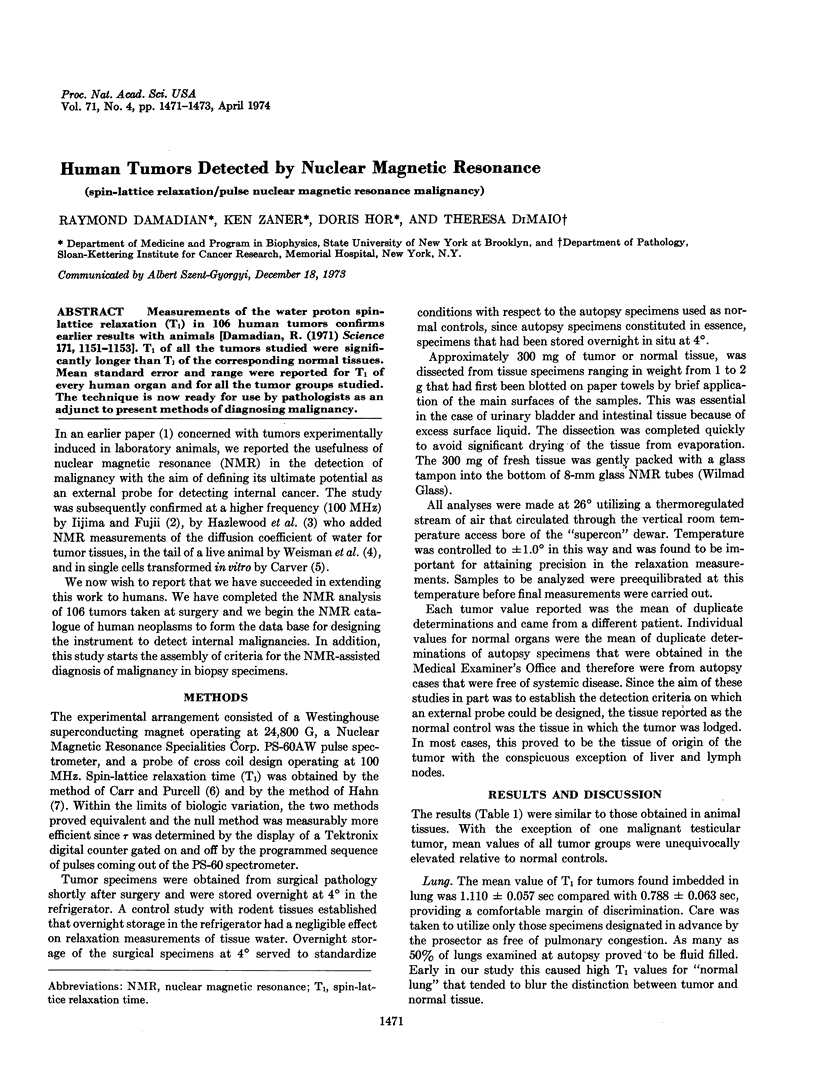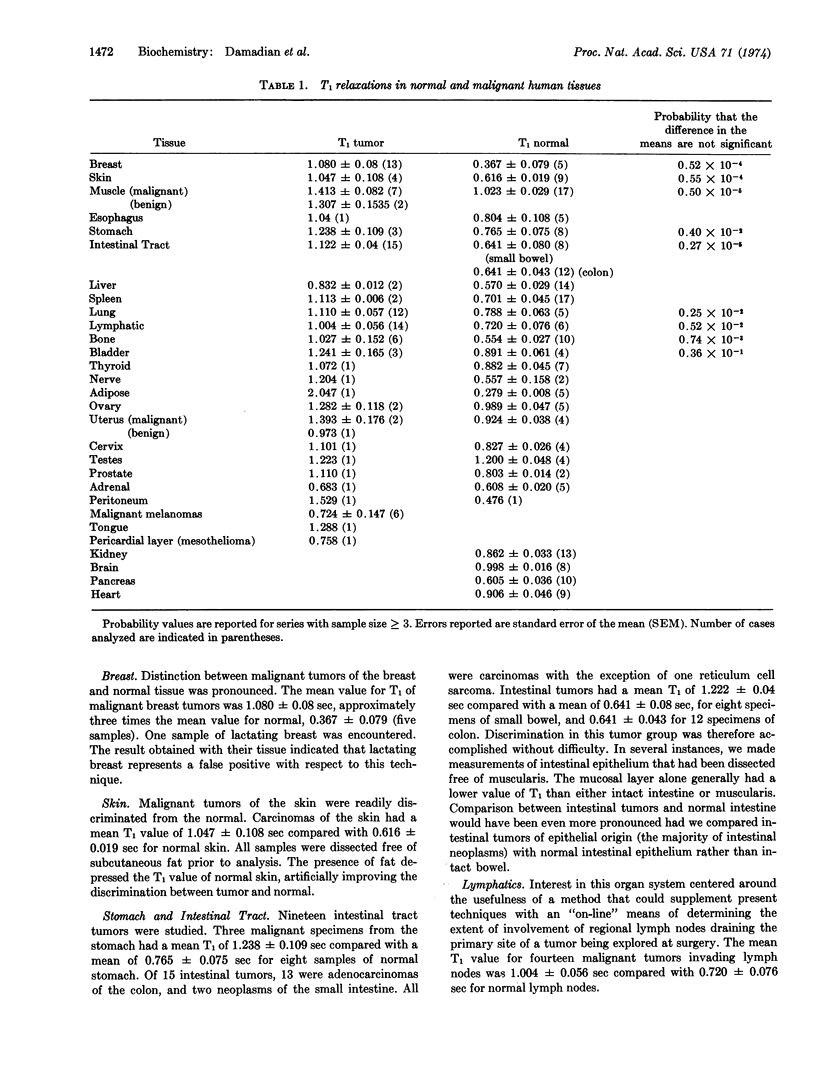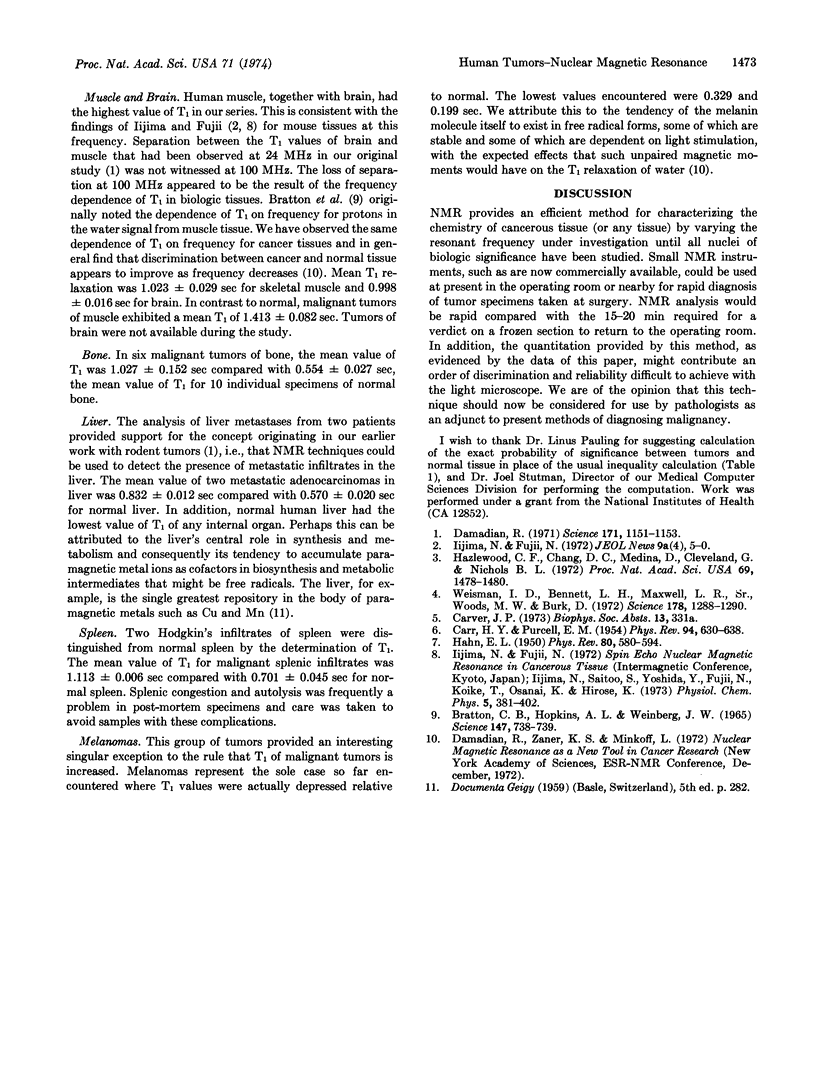Abstract
Measurements of the water proton spinlattice relaxation (T1) in 106 human tumors confirms earlier results with animals [Damadian, R. (1971) Science 171, 1151-1153]. T1 of all the tumors studied were significantly longer than T1 of the corresponding normal tissues. Mean standard error and range were reported for T1 of every human organ and for all the tumor groups studied. The technique is now ready for use by pathologists as an adjunct to present methods of diagnosing malignancy.
Keywords: spin-lattice relaxation, pulse nuclear magnetic resonance malignancy
Full text
PDF


Selected References
These references are in PubMed. This may not be the complete list of references from this article.
- BRATTON C. B., HOPKINS A. L., WEINBERG J. W. NUCLEAR MAGNETIC RESONANCE STUDIES OF LIVING MUSCLE. Science. 1965 Feb 12;147(3659):738–739. doi: 10.1126/science.147.3659.738. [DOI] [PubMed] [Google Scholar]
- Damadian R. Tumor detection by nuclear magnetic resonance. Science. 1971 Mar 19;171(3976):1151–1153. doi: 10.1126/science.171.3976.1151. [DOI] [PubMed] [Google Scholar]
- Hazelwood C. F., Chang D. C., Medina D., Cleveland G., Nichols B. L. Distinction between the preneoplastic and neoplastic state of murine mammary glands. Proc Natl Acad Sci U S A. 1972 Jun;69(6):1478–1480. doi: 10.1073/pnas.69.6.1478. [DOI] [PMC free article] [PubMed] [Google Scholar]
- Weisman I. D., Bennett L. H., Maxwell L. R., Sr, Woods M. W., Burk D. Recognition of cancer in vivo by nuclear magnetic resonance. Science. 1972 Dec 22;178(4067):1288–1290. doi: 10.1126/science.178.4067.1288. [DOI] [PubMed] [Google Scholar]


